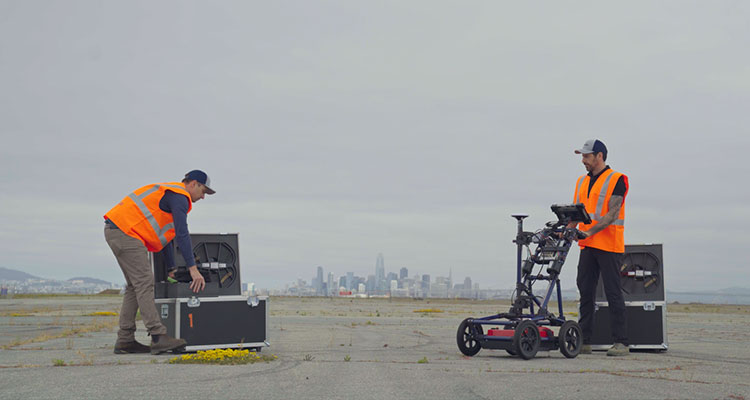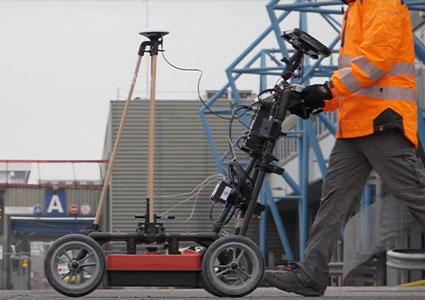How AI can curtail large-scale construction challenges
The funding surge for massive climate-driven infrastructure initiatives continues to fuel the rise of mega-projects, with analysts predicting more than $130 trillion to be spent on decarbonization and critical infrastructure renewal projects. As the built world becomes increasingly complex and climate-conscious in the race to meet net-zero targets, construction practices must follow suit. To keep pace with heightened demands and accelerated delivery timelines for a seemingly endless pipeline of renewable energy infrastructure and green transportation/eco-city projects, construction industry leaders are rethinking longstanding practices and more readily embracing new technologies.
 Construction’s costly carbon challenge
Construction’s costly carbon challenge
While the building/construction sector is widely known as the most egregious emitter of greenhouse gases, many fixate on the materials used (concrete, steel, etc.) and forget to factor in hidden carbon challenges. Unnecessary excavation and exploratory drilling create a massive amount of greenhouse gas emissions, while also causing dangerous conditions and lengthy, costly delays.
Adding to the construction carbon conundrum, most infrastructure projects run over time and over budget. Delays due to unforeseen events and lackluster forecasting continue to derail construction timelines, creating costly project overruns, with senior project executives reporting overrunning budgets and schedules for capital projects by 30 to 45 percent on average, with nearly nine in ten large-scale construction projects delivered late. And the longer a project takes, the more expensive and environmentally damaging it becomes as more heavy equipment is used and the more pollution and community risk is created.
McKinsey recently confirmed what we all knew – projects, especially megaprojects, typically run well over budget and are hampered by incessant delays. But they also drew attention to the importance of the pre-construction period, noting that “preconstruction excellence enables stakeholders to understand the full potential of cost and schedule improvements across a project, and then to build or transform the project delivery system to ensure this potential is delivered.”
The value of underground vision
To design and properly deploy/maintain renewable energy systems and a more sustainable built world, major shifts in construction must take place. In fact, Bain found that energy and utilities companies and engineering, procurement, and construction (EPC) contractors all agree on the need to overhaul how large-scale capital projects are managed, with some actively exploring ways to improve the end-to-end project delivery model.
Effectively upgrading aging infrastructure and creating a greener grid, depends on construction companies, energy providers and regulators having an accurate view of what lies underground. Insufficiencies in the early planning stages, such as site selection, create tremendous on-site and long-term risks for infrastructure projects.
The inability to ‘see’ underground has created a longstanding challenge for construction leaders as even the most sophisticated conventional methods of underground exploration and mapping rely on incomplete, inaccurate data. Costly, environmentally damaging and potentially catastrophic incidents can occur when teams don’t have an accurate map of what lies beneath the surface before they dig – from hitting electric lines and striking natural gas pipes, to unearthing abandoned utility assets or inadvertently relying on unstable ground layers. There is no room for uncertainty when it comes to ensuring safer, more sustainable infrastructure projects.
Preventing delays with AI-powered planning
Key steps that should be taken before any build for climate-conscious construction have been traditionally overlooked or thought to be unobtainable. However,

advances in artificial intelligence (AI) and multi-sensing technologies have unlocked a new era of more sustainable construction that was previously unachievable … and it starts well before a single shovel is raised or heavy machinery is brought in.
AI and advanced underground sensing significantly reduce the carbon footprint of construction projects by enabling precise planning and execution from early in the process and then at every step through to completion. Construction teams never want to encounter unexpected obstacles, especially when valuable, and often volatile, buried assets are involved.
Processing enormous amounts of data (up to 30 times more than traditional scanning technologies), AI-powered underground intelligence platforms empower construction teams to mitigate those risks, accelerating project timelines, lessening environmental impact, and reducing costs in turn. It is also critical that AI platforms account for variations in underground infrastructure needs, soil conditions, and even regional regulatory requirements.
Whenever a project lead needs to know what is underground – to avoid unknown hazards and preserve buried assets – AI can provide accurate subsurface vision and detailed maps with a higher level of accuracy for the built environment.
Time for an AI evolution in construction
Speed and efficiency matter more than ever. With accurate and comprehensive subsurface intelligence, construction teams can cut emissions and avoid budget and time overruns by more efficiently and sustainably planning and executing even the most massive infrastructure projects.
Sustainable construction is not just about one piece of a project – reducing carbon emissions comes from early project design through delivery. AI-powered underground intelligence will revolutionize the way we understand and interact with the project lifecycle and help us evolve to a more sustainable built world.
Ultimately, AI and advanced underground mapping technologies can help construction teams build greener, faster. Now is the time to commit to embracing the technologies that can ensure more efficient project lifecycles for critical infrastructure projects.
For a list of the sources used in this article, please contact the editor.
By Aurelia Setton
Aurelia Setton is Chief Business Officer at Exodigo, the leading innovator in non-intrusive underground discovery, using AI and multi-sensor technology to provide comprehensive, accurate maps of underground infrastructure. The company’s team has decades of experience in signal processing and AI from elite Israeli army intelligence units and is backed by top VC and industry investors.

 Construction’s costly carbon challenge
Construction’s costly carbon challenge